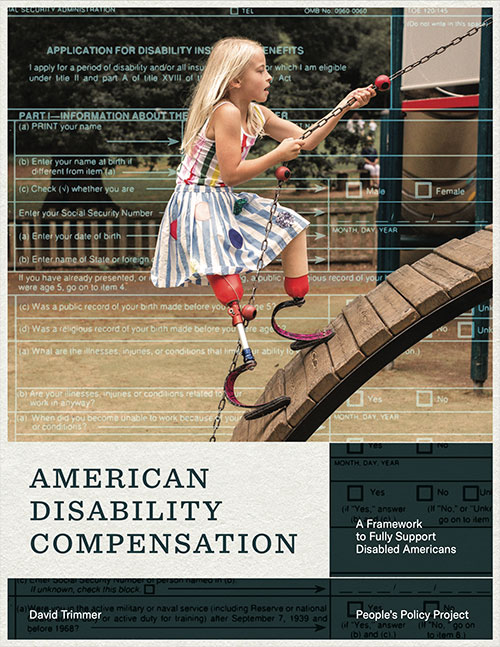The United States has over 42 million disabled Americans, with approximately half being working-age. In addition to the significant challenges that these individuals face, the federal disability programs have proven inadequate in addressing their financial needs. This report analyzes the existing disability insurance system and proposes the creation of a new program: American Disability Compensation (ADC).
Current System Deficiencies
Social Security Disability Insurance (SSDI)
- Requires extensive work history, thereby excluding young adults and individuals with childhood disabilities.
- Imposes a five-month and two-year waiting period for benefits and Medicare eligibility, respectively.
- Provides modest benefits averaging $1,487 monthly (2023).
Supplemental Security Income (SSI)
- Implements strict asset limits ($2,000 for individuals, $3,000 for couples).
- Offers maximum benefit of only $943 monthly (2024).
- Includes harsh income phase-outs that discourage potential employment and create poverty traps.
Both programs suffer from significant administrative backlogs, with wait times averaging eight months for initial decisions and potentially years for appeals. Additionally, SSDI and SSI institute an all-or-nothing earnings test denying individuals with partial disabilities any support.
Proposed Solution: American Disability Compensation
Core Framework
- Mirrors the successful VA Disability Compensation model.
- Implements a rating system from 10% to 100% disability for adults.
- Matches benefits to earning potential.
- Provides universal benefits (no means-testing), allowing beneficiaries to work without losing benefits.
Key Features
1. Adult Benefits
- Benefits range from 25% to 250% of the federal poverty line.
- Combined earned income and benefits can reach living wage levels.
- No asset limits or work history requirements.
- Straightforward eligibility based on medical evaluation.
2. Child Benefits
- Four-tier benefit system based on disability severity.
- Benefits linked to the difference between one-person and two-person federal poverty lines.
- Simplified eligibility criteria.
3. Program Integration
- Replaces SSDI and SSI.
- Absorbs Disability Insurance Trust Fund.
- Maintains VA Disability Compensation as a separate program.
Implementation Considerations
Retirement Security
- Allow ADC beneficiaries to receive disability payments post-retirement.
- Establish a minimum retirement benefit of at least 125% of the federal poverty line.
Unemployment Protection
- Provide enhanced benefits for newly disabled individuals.
- Offer 90% of prior-year earnings up to median household income.
- One-year transition period for financial adjustment.
Healthcare Access
- Automatic Medicare enrollment for all ADC recipients.
- Elimination of categorical and financial requirements for long-term services and supports.
- State option to provide Medicaid coverage for individuals with high disability ratings.
Expected Outcomes
- Significant reduction in poverty among disabled Americans.
- Improved economic security for disabled individuals and their families.
- Streamlined administration, thus reducing costs.
- Enhanced retirement security.
- Protection against sudden income loss.
- Comprehensive healthcare coverage.
Conclusion
While implementing ADC would face political challenges, it represents an ideal framework of how disability insurance should function in the United States. The program would effectively address the shortcomings of the current system while providing comprehensive support for disabled Americans throughout their lives. Although incremental reforms may offer short-term relief, transitioning toward ADC’s framework should be a priority to ensure disabled Americans can maintain a dignified standard of living.

